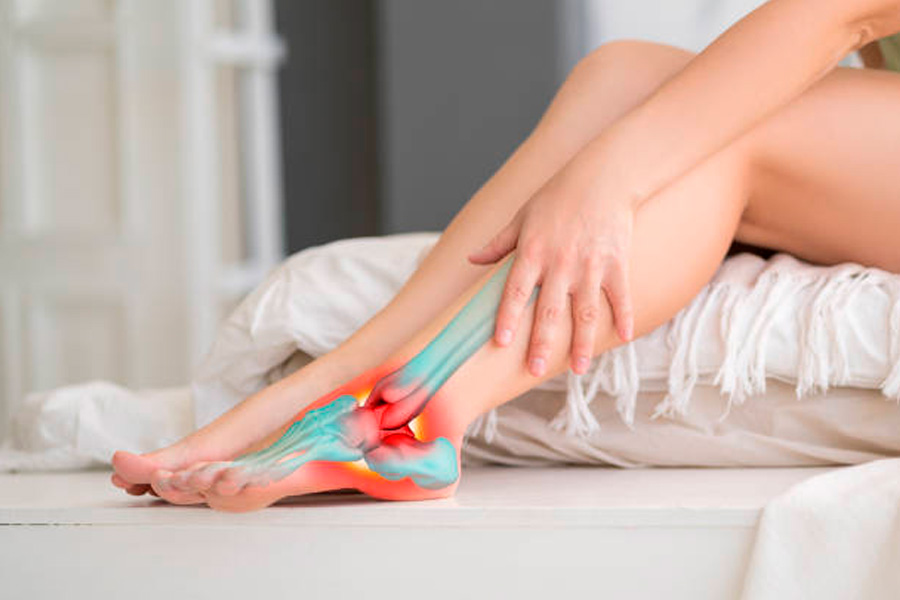Peroneal tendonitis is a condition in which one or both of the peroneal tendons are swollen and painful. Inflammation in these tendons, which connect the lower leg to the foot, is usually the result of overuse. In some cases, it can be due to a sudden injury in the ankle, such as a sprain.
This condition can relieve itself after several weeks of conservative treatment. More severe instances may require medical care and treatments. So, what exactly are these treatment options and how do they treat peroneal tendonitis? Let’s find out.
R.I.C.E. Method
If your peroneal tendonitis is not severe, the simple RICE method will do wonders. RICE stands for rest, ice, compression, and elevation. It is a treatment option that can be done easily at home.
To perform the RICE method, rest your ankle. Remember to stay away from activities that put pressure on your feet. You should then apply an ice pack or a cold compress to the injured area for at least 20 minutes every two hours. This will help deal with the pain and swelling.For the third step, wrap your ankle in a compression bandage to help the tendon heal. Lastly, elevate your ankle until it is above the level of your heart and keep it there. This will help reduce swelling and help it heal faster.
Orthotics
Orthotics are special shoe inserts that support and cushion your feet. Using them while suffering from peroneal tendonitis can lead to pain relief and faster healing.There are different kinds of orthotics, and they are all meant to fit your feet comfortably. You can get them from your local pharmacy or have custom ones made by a podiatrist.
The benefit of custom orthotics is that they are designed to fit your feet specifically. This gives your injured foot more and better support, allowing it to heal with no worries – along with helping reduce the risk of future injuries.
Therapy
Other treatment options for peroneal tendonitis include different kinds of therapy.Massage therapy is one example. Using different massaging techniques, a therapist can reduce pain and inflammation in the affected area.Massages also improve blood circulation in the area, speeding up the healing process.
Another form of therapy that can treat peroneal tendonitis is known as heat therapy. Applying heat through a warm towel or a heating pad on the affected area achieves the same effects as massage.
Immobilization
Immobilizing a severely injured joint allows it to heal without being disturbed. Immobilization can also help take the weight off of a seriously injured foot.Immobilization can be done using a soft cast or a boot made of fiberglass or plaster.Fiberglass weighs less and is more durable than plaster. On the other hand, plaster costs less than fiberglass and is more easily shaped.
Exercise
Exercising helps strengthen the muscles and tendons in the affected area. This increases blood flow to the injury, speeding up the body’s natural healing process.
Regular exercise is also a great way to prevent further injuries.To treat peroneal tendonitis through exercise, gently stretch the muscles and tendons in the ankle. Hold each stretch for 20-30 seconds before releasing it slowly.Be sure to repeat this two or three times every day.
Medication
Medicine can help reduce the pain and inflammation caused by peroneal tendonitis. Nonsteroidal anti-inflammatory drugs are one example.They stop the production of chemicals in the body that causes inflammation.
Cortisone injections are another common and effective treatment for peroneal tendonitis. Like NSAIDs, these injections reduce pain and inflammation in the affected area.Injections will be given into the sheath surrounding the tendon or into the tendon itself.
Surgery
Surgery is usually done when the ankle doesn’t respond to more conservative treatments. The procedure will involve cleaning out the damaged tissues near the peroneal tendons.This surgical procedure is known as synovectomy. Minimally invasive synovectomyis also available, and it make use of smaller cuts for less trauma to nearby tissues, less pain and scarring for the patient, and a shorter recovery process.
Another surgical procedure that can be used to treat peroneal tendonitis is arthroscopic peroneal tendoscopy. When performing this surgery, a surgeon inserts a narrow tube with a camera through a small cut. The camera allows them to visualize the tendon inside the sheath that surrounds it.
Treatment for Peroneal Tendonitis in Cincinnati, OH
Peroneal tendonitis is a painful condition that can keep you from doing the things you love. Fortunately, it can be treated through a variety of methods. Be sure to consult a podiatrist to find out which treatment option will suit your needs. Looking for the best treatments for peroneal tendonitis in Cincinnati? Visit the expert doctors at Cincinnati Foot and Ankle Care.
Our medical team will use their many years of training and expertise to determine the most effective treatment for your condition. We also provide treatment for many other conditions that affect the feet and ankles. To find out more, call the location closest to you. You can also fill out our convenient online request form to schedule a consultation with the best podiatrists in Cincinnati. We look forward to serving you!





